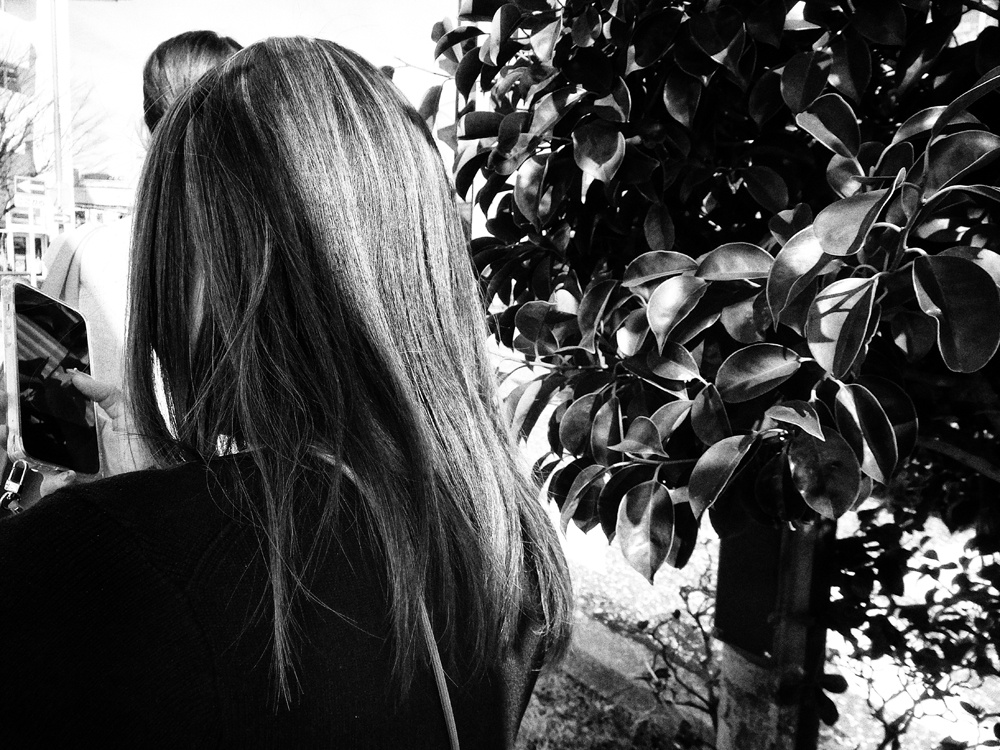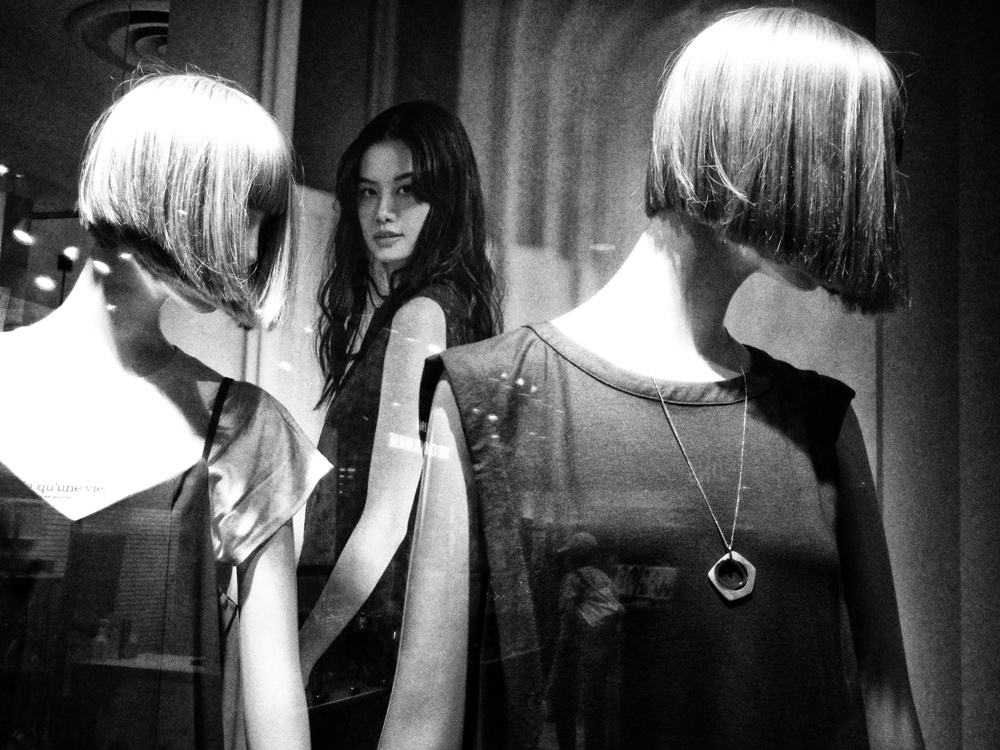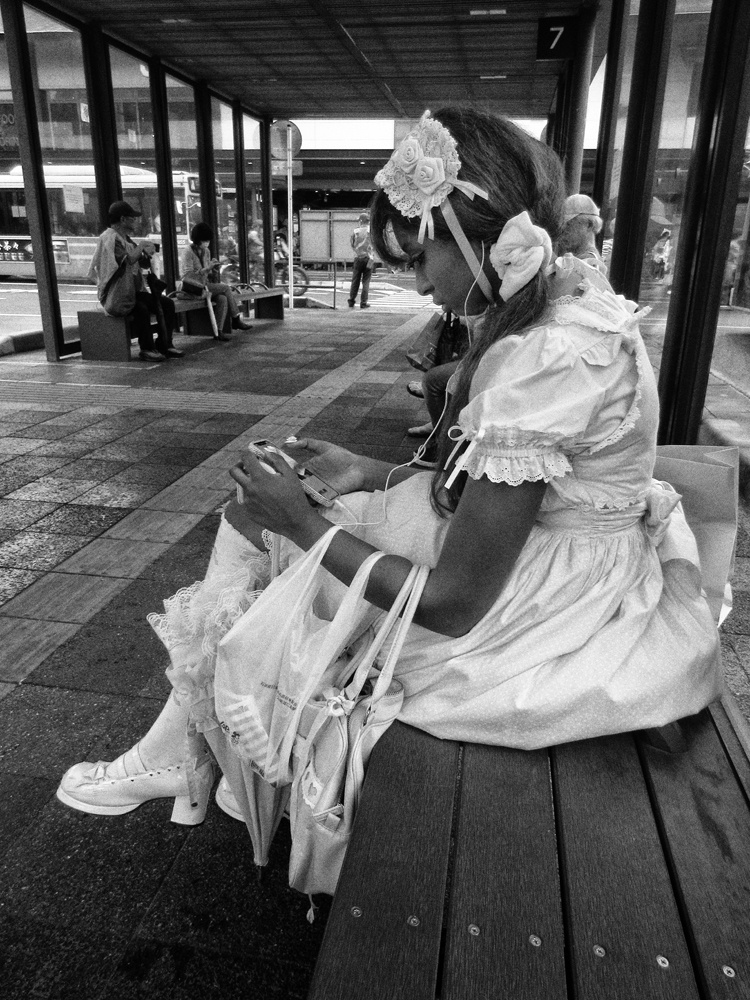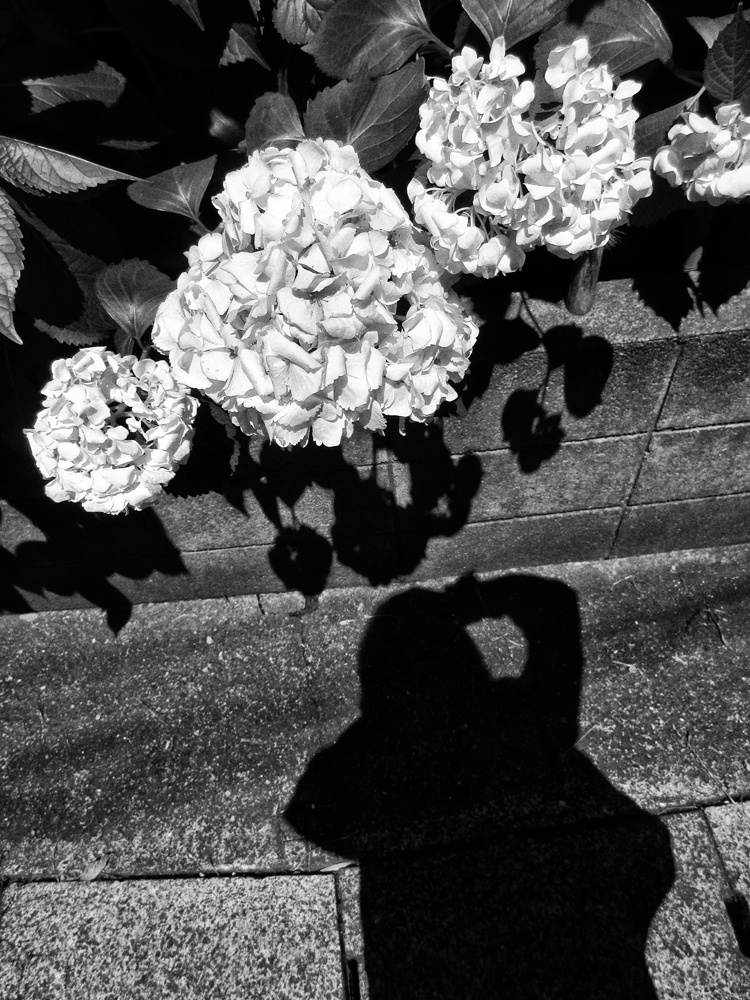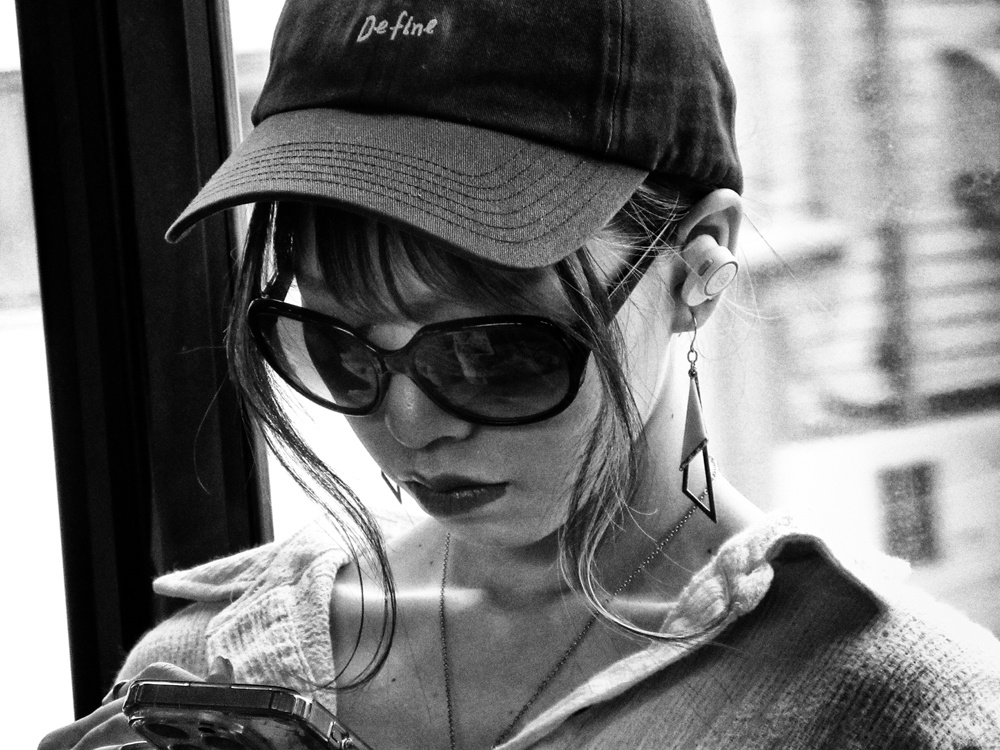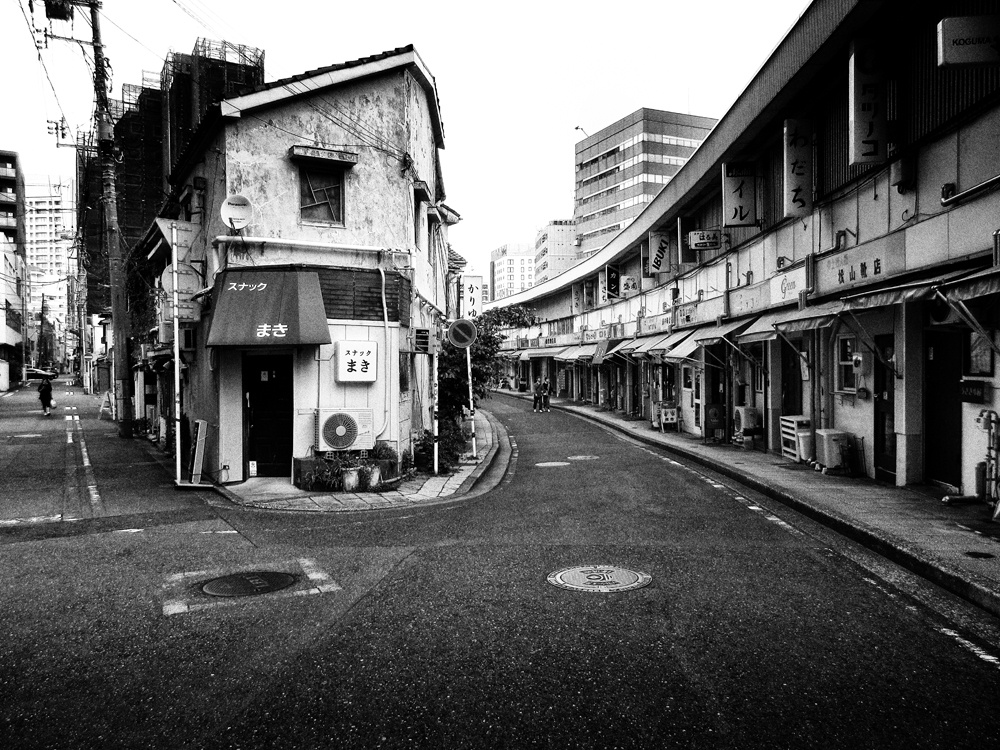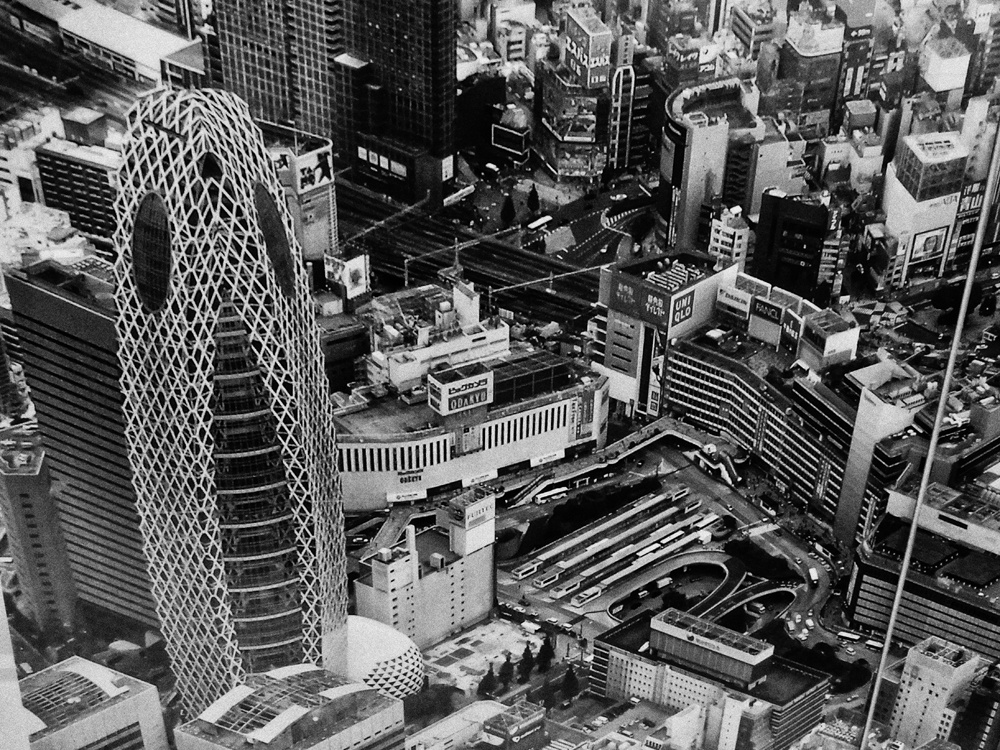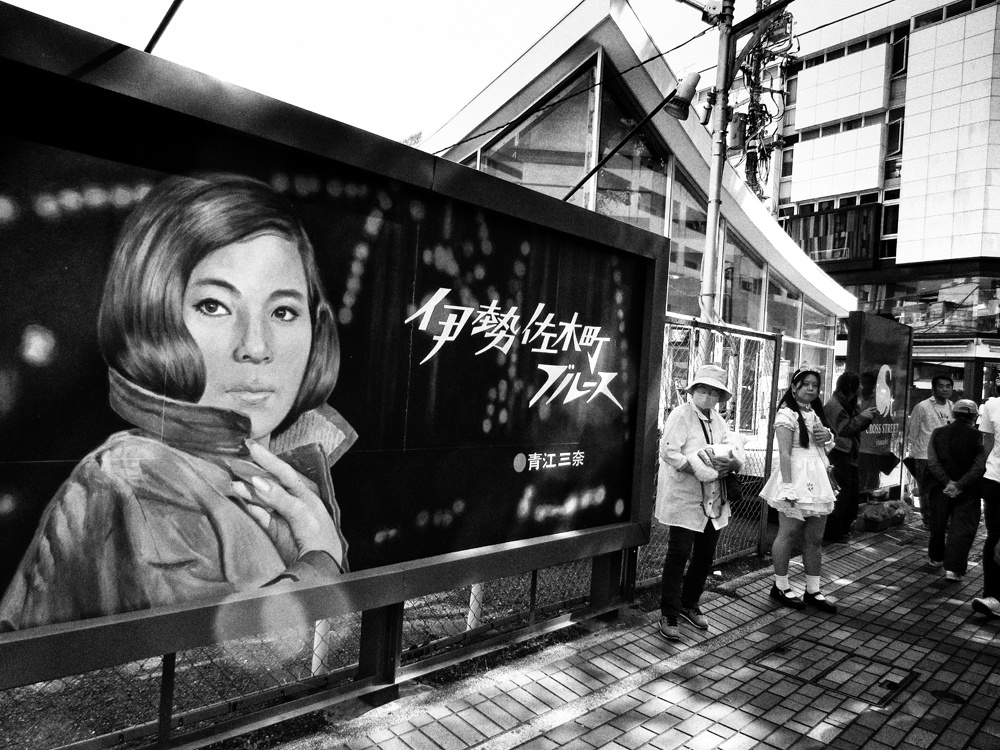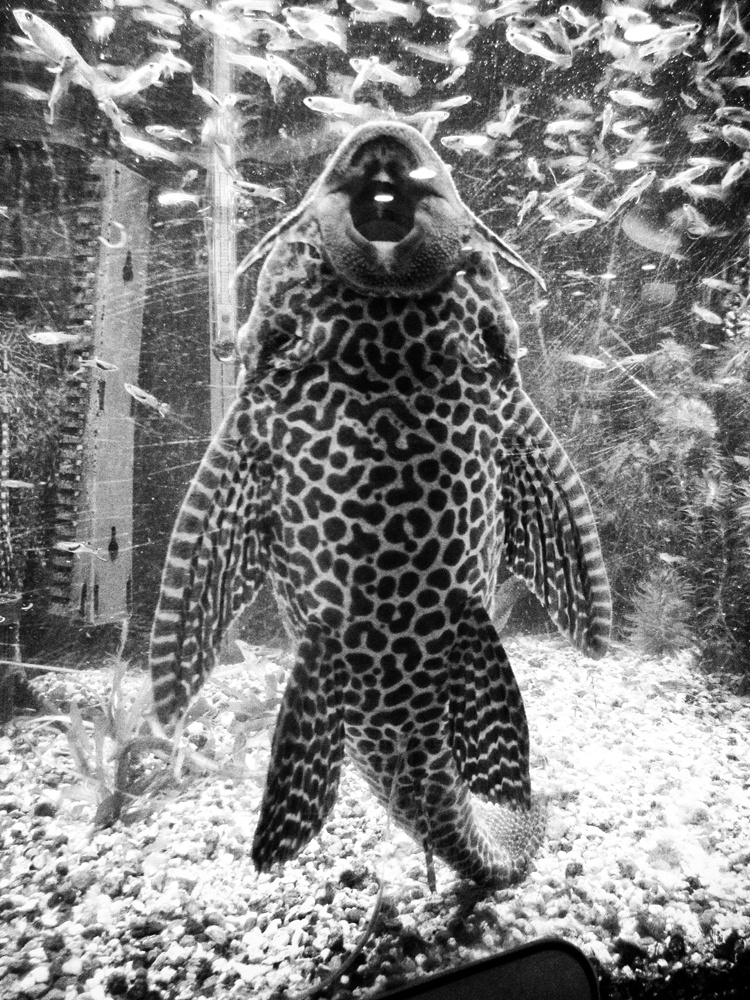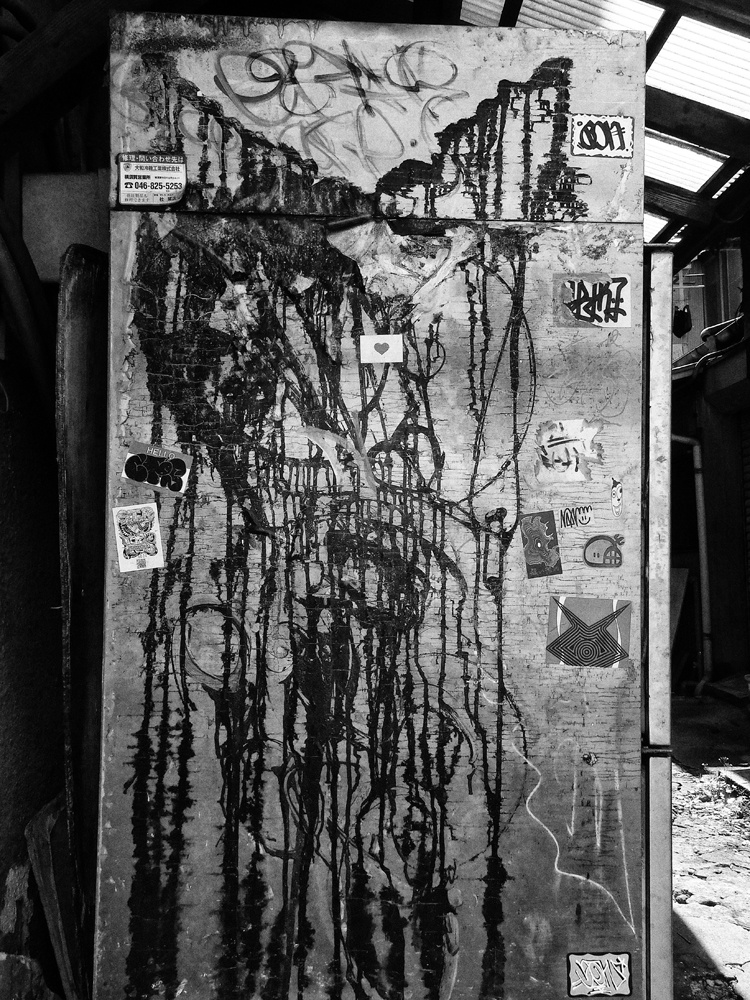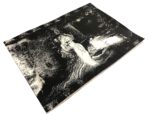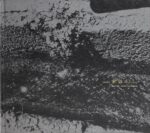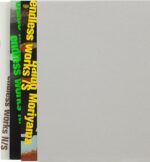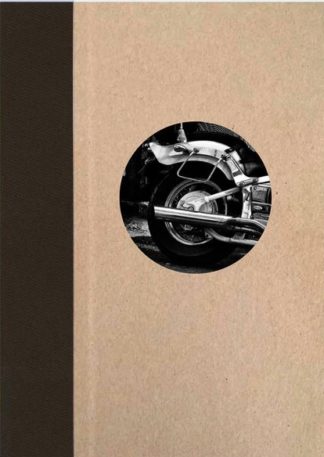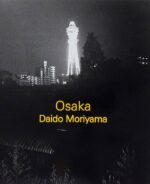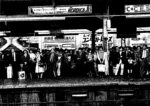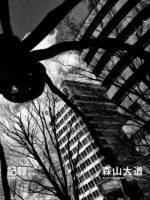Exemplaire Signé.
« Ma fille m’a emmené faire un tour dans sa voiture l’autre jour, et m’a conduit à Yokohama. Je n’y étais pas allé depuis longtemps, alors j’étais heureux de parcourir les rues de Yokohama avec mon appareil photo à la main, toujours prêt à tourner. Nous avons garé la voiture près de la gare de Kannai, et après avoir marché un moment, nous sommes arrivés à Isezakicho. Quand j’ai levé les yeux, j’ai remarqué (la chanteuse) Mina Aoe qui me souriait depuis un panneau géant et en se faisant rappeler avec joie que j’étais à Yokohama, j’ai pris quelques clichés. C’est alors que j’ai vu un groupe de filles joyeuses défiler de l’autre côté de la rue, ce qui m’a fait immédiatement cliquer sur tous les côtés. Les rues étaient bondées, et en voyant les gratte-ciel de « Minatomirai » derrière les bâtiments le long des avenues, je ne pouvais m’empêcher d’être impressionné par la façon dont Yokohama avait changé.
Avant – il y a déjà bien longtemps – j’ai souvent fait des voyages à Tokyo avec le photographe Takuma Nakahira, qui vivait également à Zushi à l’époque. Nous prenions un train sur la ligne Yokosuka, puis changeons pour la ligne Toyoko à Yokohama. Mais une fois à Yokohama, au lieu de prendre le train suivant, il arrivait si souvent que nous quittions la gare par caprice, descendions dans la zone de Sakuragicho et entrions dans un café où nous finissions par boire du café pendant des heures. Même quand je lui ai suggéré de se promener un peu plus et de prendre des photos dans le quartier, Nakahira ne s’intéressait qu’au paysage autour du port de Kawasaki la nuit, alors pendant son café il continuait à parler joyeusement des choses et des gens. Comme Godard, ou les chansons de Mina Mazzini, ma chanteuse préférée à l’époque.
Quand j’y pense maintenant, mes seuls souvenirs de Yokohama sont ceux de Nakahira qui a tiré comme un fou quand nous sommes allés tous les deux au port de Kawasaki la nuit, et puis encore à l’occasion de son exposition au Musée d’art de Yokohama.
Le paysage urbain actuel de Yokohama a piqué ma curiosité.
Je suppose que je vais continuer à y aller de temps en temps, et prendre un tas de photos. » – Extrait des mots de Daido Moriyama
Signed Copy.
« My daughter took me for a ride in her car the other day, and drove me to Yokohama. I hadn’t been there for quite a long time, so I was happy to roam the streets of Yokohama with my camera in my hand, always ready to shoot. We parked the car near Kannai Station, and after walking for a while, we arrived at Isezakicho. When I looked up, I noticed (the female singer) Mina Aoe smiling down at me from a giant billboard, and being happily reminded once again that I was in Yokohama, I took quite a few snapshots. That was when I caught sight of a group of cheerful girls parading on the other side of the street, which instantly had me clicking away to all sides. The streets were getting crowded, and seeing the skyscrapers of “Minatomirai” behind the buildings along the avenues, I couldn’t help but feel strongly impressed at how much Yokohama had changed.
Before – in fact quite a long time ago – I often made trips to Tokyo together with the photographer Takuma Nakahira, who was also living in Zushi back then. We would take a train on the Yokosuka Line, and then change to the Toyoko Line at Yokohama. But once we were at Yokohama, instead of jumping on the next train, it happened ever so often that we walked out of the station on a whim, down to the Sakuragicho area, and into a coffee shop where we would end up drinking coffee for hours. Even when I suggested walking around a bit more and taking photos in the neighborhood, Nakahira was only interested in the scenery around the port of Kawasaki at night, so over his coffee he just kept talking happily about things and people. Like Godard, or the songs of Mina Mazzini, my favorite singer at the time.
When I think about it now, my only memories related to Yokohama are those of Nakahira shooting like crazy when the two of us eventually went to the port of Kawasaki at night, and then again at the time of his exhibition at the Yokohama Museum of Art.
The present cityscape of Yokohama has piqued my curiosity.
I guess I will continue going there every now and then, and take a bunch of photos. » – from afterwords by Daido Moriyama


